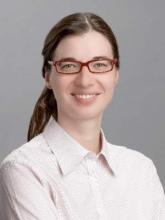JACKSONVILLE, FLA. – When an admired surgical resident from Stanford (Calif.) University took his own life during his fellowship within 4 months of completing his residency, it sent a wake-up call to the residency program directors that burnout of surgical and medical residents was real and that something had to be done about it.
So Stanford launched a programmed approach to address resident burnout that includes group counseling, retreats, and even a fully stocked refrigerator accessible 24 hours a day, and found that after 3 years residents reported feeling more “in balance” than they did before the program started, said Dr. Claudia Mueller, a pediatric surgeon at Stanford, who presented a poster on the program at the Association for Academic Surgery/Society of University Surgeons Academic Surgical Congress.
The surgery department at Stanford has charted the progress of the program to address burnout among surgical residents. The effort started with the creation of a committee at the behest of Dr. Ralph Greco, former Stanford residency program director and study coauthor. “This group was intentionally resident driven so that we could figure out how best to look at four concepts of wellness – psychological, physical, social, and professional – from the resident perspective, because all four areas are necessary,” Dr. Mueller said.
Components of the program include outside group activities, group sessions on a 4- to 6-week schedule with a psychologist who is also available for individual sessions, and wellness visits to doctors.
To evaluate the program, the study authors had the surgical residents complete two different surveys, the Life Balance survey and the Causes of Stress survey, at separate times during 2013-2015. In the first assessment, only 5 of 25 residents surveyed achieved scores indicating their lives were in balance. “We knew that something was off,” Dr. Mueller said.
First-year residents were more likely to report feeling in balance than were more senior colleagues, Dr. Mueller said. “After about 3 years, we looked at how residents were doing in terms of balance, and what we found is that there have been some improvements, although not as many as we would like,” she said. “Junior residents in particular seemed to have shown some improvements in their overall balance.”
The concept is reproducible at other institutions, Dr. Mueller said. Dr. Ellen Morrow, a former Stanford resident, has started a similar program at the University of Utah, and other residency managers have approached Stanford for advice. Dr. Mueller said she believes that one key to the program is the involvement of residents. “It has to be what the residents want, not what we think they want,” she said.
“Our program came out of a very tragic event,” Dr. Mueller said. “We’re trying obviously not only to prevent a tragedy like that from happening again, but to also improve the lives of residents overall. The burnout is everywhere.”
Dr. Mueller said she had no financial relationships to disclose.

